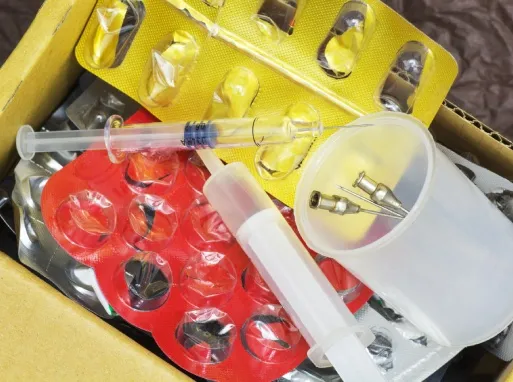Last Updated on April 17, 2024 by Nasir Hanif
Clinical waste is anything that can be harmful like needles, dressings, and other items and any other item that could be contaminated with human tissue, blood or other.
Collections Of Clinical Waste
Or, the practice or the team in charge of the area will sign a deal for waste collection with a business which will perform regular collection of any waste generated by the practice.
There are specific provisions in paragraph 46 of Premises cost Directions 2013 that allow practices that they can apply to their local team to pay for the cost of collection.
Audits And Pre-Acceptance Checks
A medical waste management firm will dispose of the practice’s waste by the process of incineration or in a treatment facility. The facilities must receive specific details from GP practices regarding what waste they will accept before they will accept the waste. It is part of the “pre-acceptance inspections’.
Practices that are GP must present auditors for their garbage to suppliers to be able to have their waste accepted. In the event of not providing an audit report may cause the EA cutting off collection of waste.
The practice may choose to gather the data on its own or hire a third party to collect the data. The waste management company could offer to perform the audit on behalf of the practice, but they may cost.
Your Obligations
The practices of medical waste disposal are classified low risk and are required to conduct an audit at least every 5 years. The business does not have to give information through completing the template for waste contractors or pay a fee.
The legal responsibility to conduct pre-acceptance inspections lies with the facility that disposes of waste as per the Environmental Protection Act 1990, all producers are required to fulfil a “duty of diligence’ handling medical waste and making sure that disposal is secure.
Bags For Waste Disposal From Patients
The local arrangements for treatment of clinical waste services can differ. If the waste is generate cause by a patient who is treating themselves at home the local authority is able to take it away. They may cost for this service.
In many places the most recommend method of disposal for certain kinds of medical waste, including sharps boxes that are prescribe should be to take them back to the GP office or pharmacy.
If a clinic accepts seal containers or bags for clinical waste disposal for patients to dispose of their waste, they are under an obligation under law to identify and categorise the waste in a proper manner.
Most of the time, the doctor must have a sufficient understanding of the treatments their own patients are receiving to allow them to make this happen.
Colour Codes For Boxes With Sharp Edges
While colour-coding is not require, it can be employ to aid producers to identify and sort their waste which is require. Therefore, you should segregate your garbage and provide your waste company with the appropriate details to help them handle it in a proper manner.
European Waste Catalogue Codes
The European catalogue of medical sharps disposal is the accepted method for classifying the waste. Along with a detailed description of the waste you should inform your waste service about the appropriate codes for every type of waste you’re taking away.
If you’re using the self-audit tools kit above you will notice that the codes of every kind of waste are list in the right column.
The Disposal Of Medical Waste, Today As Well As In The Future
The proper disposal of medical waste is an essential requirement for a vast number of establishments and companies. Medical waste is biohazards resulting from medical or biological processes, like the diagnosis and prevention of illnesses.
The main sources of this kind of waste include vet hospitals, clinics for health funeral homes, nursing homes, medical research laboratories, dental offices, physician offices as well as home healthcare.
It is the first thing to do to make sure the waste is safe, clean and is not being control prior to disposal. This is do by placing medical waste through some kind of process that removes all viruses, bacteria as well as fungi, spores, and other substances that could have be a part of the waste you’re disposing of.
The next step is to decide which place to dispose of the leftovers after sterilisation. Additional aspects include energy and environmental issues. The most commonly use methods of the disposal of medical waste are outline below, as are the more recent techniques that have become widespread throughout the field.
Autoclaving
Most medical waste management firms and major hospitals throughout the United States use a technique known as autoclaving.
Autoclaving can be use for sterilising equipment such as medical waste, or other items that have be contaminate. It is do by putting the items into a cylinder that is fill with steam pressurize to evenly heat all the objects and remove any microorganisms. Sterilise any non-pathological infectious waste.
Incineration
Incineration is a popular method of commercial disposal, typically for pharmaceutical and pathological waste. The Incineration is a process that uses high temperatures which reduces combustible and organic waste into inorganic, non-combustible matter, resulting in the reduction of weight and volume of waste.
Another advantage of incineration is that there is minimal material waste finish following the process. It is usually the method of disposal of choice for waste that is not reuse or recycle and is necessary for pathogens.
The Drawbacks Of The Current Options For Disposal Of Waste
The issue with conventional and current methods of the disposal of waste from medical facilities is that they are typically inefficient and insufficient or generate new waste during the process of treating existing waste.
This is why the waste producers are always looking for eco-friendly alternatives to incineration or autoclaving which is follow by the disposal of waste. The main issue in autoclaving are that it concentrates mostly or exclusively on sterilisation.
After all the sterilisation has been complete, there’s still the physical waste, the solid waste to handle. The majority of the waste is later discard and eventually ends up in the landfill. The Incineration can leave an ash trail that must be deal with in the landfill.
In the end the end, incineration and autoclaving were the most efficient and widely use methods for a long time. There is now an alternative that is safer, cleaner and more efficient than the ozone waste disposal technique.
Technology For Waste Disposal As An Alternative
Utilising ozone-base waste disposal technology to dispose of medical waste is do in an ethical and responsible way that eliminates contaminants and doesn’t create pollution in the process.
The process is eco-friendly and safe for the health of both the environment and public in the places where we reside, work and play. Ozone is an extremely powerful antioxidant. It is capable of oxidising many molecules, comprising the metals (with being exempt from platinum, gold and Iridium) and nitrogen oxides, carbon, and sulphides to mention some.
It is extensively studied for its use as a water treatment technique and disinfectant due to its capability to make carbon-carbon double bonds more oxidised, eliminating all pathogens, including fungi, bacteria and viruses, as well as prions.
Summary
The most common method used for the disposal of waste from medical facilities is through the autoclave. The issue is that it requires the heating of boilers in order to facilitate the production of steam, and this takes a significant amount of energy for every amount of medical waste processed.
Another benefit of using clinical waste collection that it does not saturate it with liquid as autoclaving can, which decreases the potential of ozone as a fuel source.
This allows for the sterilisation and breaking down of waste materials and keeps the remaining waste from landfills. The treated waste then becomes accessible to use to fuel the future.

